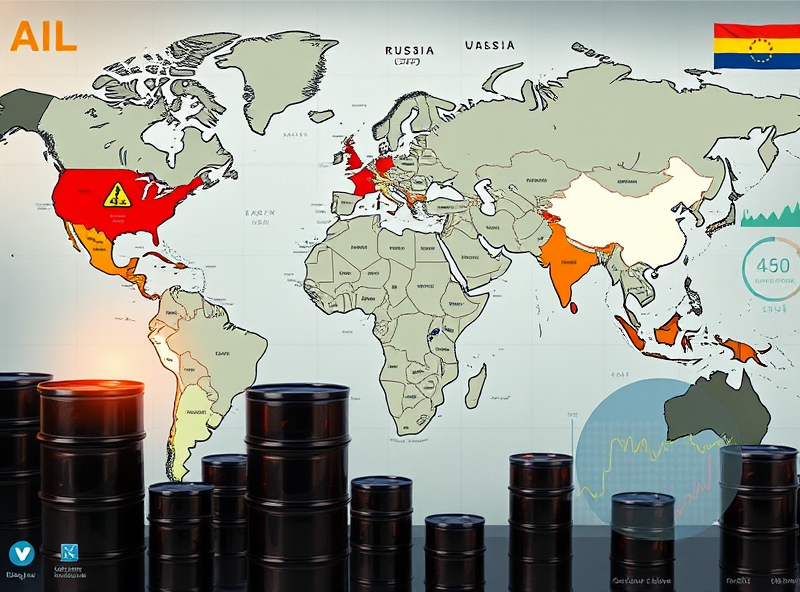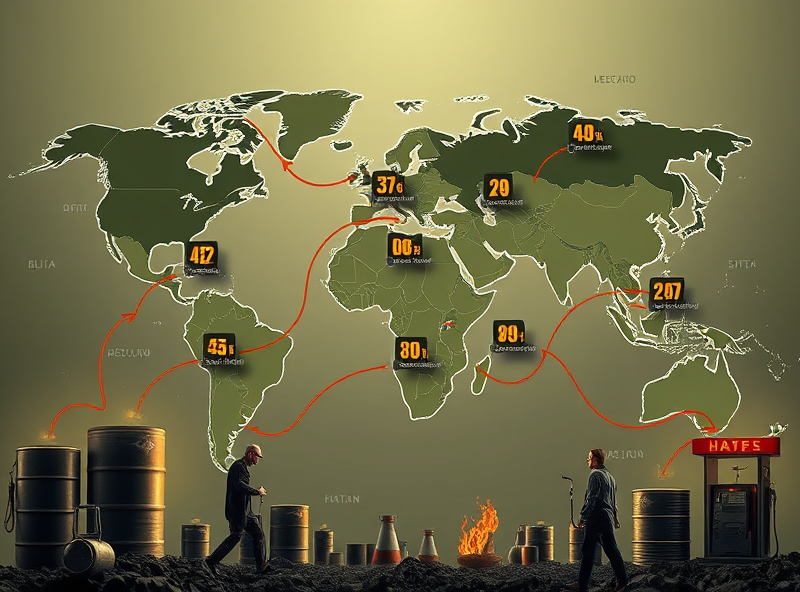
Global Oil Price Volatility: Causes and Economic Impacts
Supply and Demand Imbalances in the Oil Market

Oil prices are highly sensitive to shifts in supply and demand, and even small imbalances can lead to significant volatility. Understanding these dynamics can help individuals and businesses better anticipate changes in fuel costs, investment risks, and broader economic trends.
On the supply side, geopolitical tensions, natural disasters, and production decisions by major oil-producing countries—especially OPEC+—can drastically alter output levels. For example, a sudden cut in oil production by a major exporter can tighten global supply, driving prices up. Conversely, a surge in production or the release of strategic reserves can ease prices.
Demand, on the other hand, is influenced by global economic activity, seasonal consumption patterns, and shifts in energy use. During periods of economic growth, industrial activity and transportation needs increase, pushing demand—and prices—higher. In contrast, economic slowdowns or transitions to renewable energy can reduce demand, leading to price drops.
The COVID-19 pandemic offered a clear example of how demand shocks can impact oil markets. As global travel and industrial activity plummeted, oil demand collapsed, leading to historically low prices—even briefly turning negative in April 2020.
For consumers and businesses, staying informed about these supply-demand dynamics can support smarter budgeting, investment decisions, and risk management strategies. For instance, companies reliant on fuel can hedge against price spikes, while investors can monitor oil market trends to anticipate shifts in energy stocks or inflation pressures.
For further reading, the U.S. Energy Information Administration (EIA) provides regular updates and analysis on global oil supply and demand: https://www.eia.gov/
Geopolitical Conflicts and Their Oil Price Shockwaves

Geopolitical conflicts have long been one of the most significant drivers of oil price volatility. When tensions rise in oil-producing regions—such as the Middle East, Eastern Europe, or parts of Africa—markets react swiftly, often pushing oil prices upward due to fears of supply disruptions. These conflicts can range from full-scale wars to sanctions, political instability, or even threats of military action.
For example, the Russia-Ukraine war in 2022 caused a sharp spike in global oil prices as Western nations imposed sanctions on Russian energy exports, one of the world’s largest oil suppliers. This not only disrupted supply chains but also led to panic buying and speculative trading, further inflating prices.
The economic impact of such price shocks is far-reaching. Higher oil prices increase transportation and manufacturing costs, which can lead to inflation. For consumers, this means more expensive goods and services, while for businesses, it can squeeze profit margins. Countries heavily reliant on oil imports may also see their trade deficits widen, weakening their currencies and slowing economic growth.
Understanding the link between geopolitics and oil prices helps individuals and businesses prepare for market fluctuations. It also underscores the importance of energy diversification and strategic reserves to cushion against sudden shocks.
For a deeper look into how geopolitical events affect oil markets, the U.S. Energy Information Administration (EIA) provides comprehensive data and analysis: https://www.eia.gov/todayinenergy/
Financial Policies and Market Reactions

When oil prices become volatile, financial policies play a crucial role in stabilizing economies and calming markets. Central banks and governments often respond with monetary and fiscal measures to cushion the impact on inflation, currency value, and investor confidence. For instance, when oil prices surge, central banks may raise interest rates to control inflation, while governments might adjust subsidies or strategic reserves to manage supply shocks.
Market reactions to these policies can vary. Investors tend to move capital based on perceived policy effectiveness—leading to fluctuations in stock markets, bond yields, and currency exchange rates. For example, a credible interest rate hike can strengthen a country’s currency, while unclear or delayed policy responses may increase market uncertainty.
Understanding this dynamic helps individuals and businesses make informed financial decisions. For instance, anticipating central bank actions can guide investment strategies or help manage exposure to oil-dependent sectors.
For more in-depth insights, the U.S. Energy Information Administration (EIA) offers reliable data and analysis on oil market trends: https://www.eia.gov
Inflation and Industry-Wide Economic Ripple Effects

When global oil prices become volatile, one of the most immediate and noticeable consequences is inflation. Since oil is a fundamental input in transportation, manufacturing, and energy production, price fluctuations directly impact the cost of goods and services across multiple sectors. For example, when oil prices rise, transportation costs increase, leading to higher prices for consumer goods. This can erode purchasing power and put pressure on household budgets.
Industries that are heavily reliant on oil, such as airlines, logistics, and agriculture, often experience sharp cost increases. These costs are frequently passed on to consumers, contributing to overall inflation. In response, central banks may raise interest rates to control inflation, which can slow economic growth and increase borrowing costs for businesses and consumers alike.
The ripple effects extend further. Small businesses with tight margins may struggle to absorb rising input costs, potentially leading to layoffs or closures. In the long term, sustained oil price volatility can reduce investor confidence and hinder economic planning, particularly in developing economies that are more vulnerable to energy price shocks.
Understanding these dynamics helps individuals and businesses make more informed financial decisions, such as budgeting for higher energy costs or investing in energy-efficient technologies.
For more detailed analysis, the U.S. Energy Information Administration (EIA) provides regular updates on oil market trends: https://www.eia.gov/







